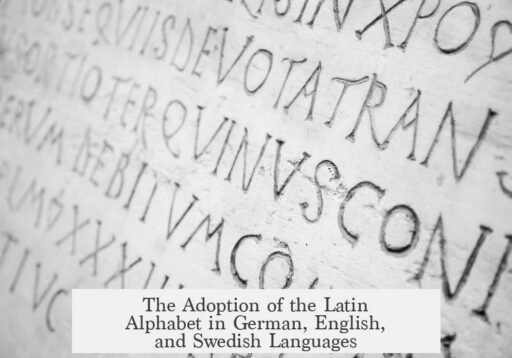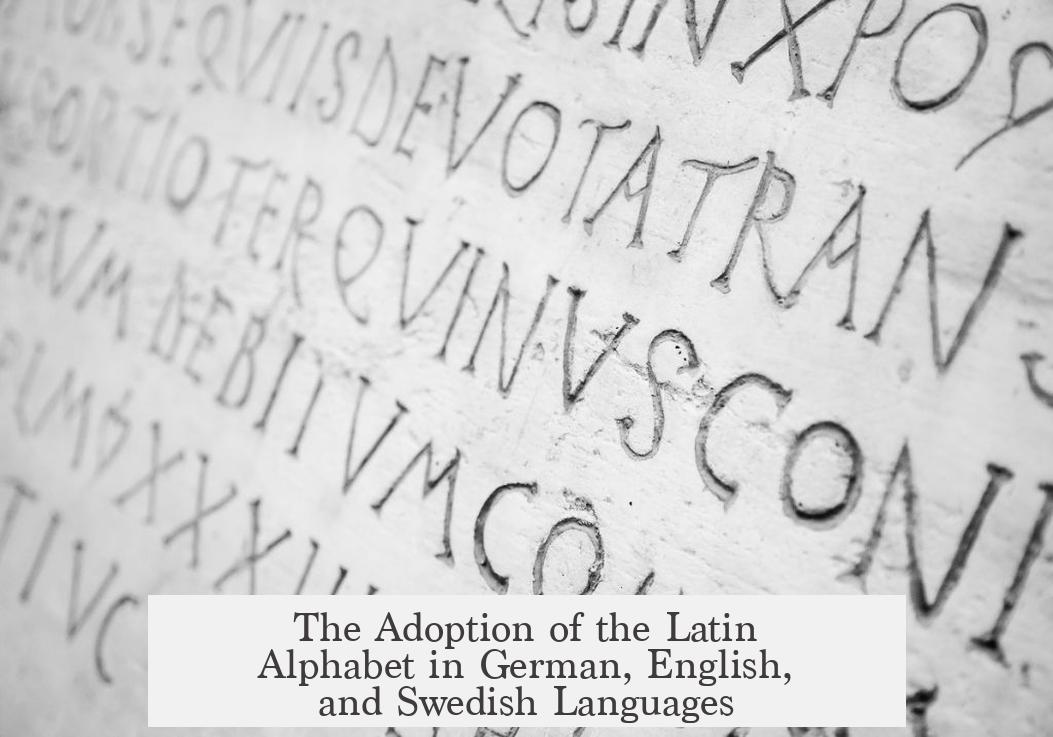Non-Latin based languages like German, English, and Swedish adopt the Latin alphabet mainly due to the influence of Christianity and the Church, the alphabet’s phonetic adaptability, and historical as well as political reasons.
The Latin alphabet spread across northern Europe as Christianity expanded. Latin was the language of Western Christianity. Priests and monks, who were often among the few literate people in society during the Middle Ages, used Latin for religious and administrative purposes. These clerics maintained records in Latin and taught writing to locals using the Latin alphabet. This educational role introduced local populations to the Latin script. For example, Old Swedish started using Latin script in important documents like laws and religious texts around 1225. The oldest surviving document, the provincial code “Västgötalagen,” reflects this early adoption.
Religious influence also extended beyond Western Europe. Different religious groups used distinct scripts: Orthodox Christians used Greek or Cyrillic, Muslims used Arabic script, and Jews used Hebrew. Western Europe’s widespread adoption of Christianity meant that the Latin alphabet became dominant in many areas outside the original Roman Empire. Clergy literacy reinforced the use of Latin characters for new vernacular languages.
The Latin alphabet’s phonetic nature played a key role in its spread. This writing system proved highly adaptable to many languages. Unlike logographic or non-phonetic systems, such as Chinese or Egyptian scripts, the Latin alphabet could represent various sounds efficiently. This adaptability simplified its adoption for languages with different phonologies, like Germanic and Scandinavian tongues. Further, the Latin characters remain flexible enough to add diacritics or new letters, allowing languages to express unique sounds. For instance, Swedish developed letters like ä, å, and ö by evolving combinations of Latin letters.
English offers a notable example of Latin alphabet adoption intertwined with linguistic borrowing. English is a “borrowing” language with a vocabulary heavily influenced by Latin and Romance languages. About 29% of English words derive directly from Latin, and if one counts words from French and Italian, the total rises above 60%. This influence came primarily after the Norman Conquest in 1066, which brought Latin-based French into English courts and literature. Writing in English used the Latin alphabet, shaped by earlier Old English spellings, including the use of the letter “c” for sounds like /k/ and /tʃ/. Interestingly, Germanic languages like German and Scandinavian tongues prefer the letter “k” for /k/ sounds rather than “c,” reflecting different linguistic traditions.
Historical and political factors also affected alphabet adoption. In periods of nationalism and colonialism, some groups changed writing systems deliberately. Turkey’s switch from Arabic to Latin script in 1928 illustrates political motives influencing alphabet reform. Finnish used the Latin alphabet because Mikael Agricola, a Swedish clergyman, created Finnish written language forms based on Latin letters. These cases show how alphabets not only spread by religion but often aligned with political power or educational reforms.
The Latin alphabet replaced or overshadowed several other systems that existed or developed in Eurasia. During the 17th and 18th centuries, intellectual debates questioned the efficiency of non-phonetic writing systems such as Hebrew, Arabic, or Chinese script. The Latin alphabet’s simplicity and phonetic precision led many to view it as superior for representing spoken languages clearly, especially as literacy spread beyond clergy to common people.
- Christian Church spread Latin language and alphabet with its religion to northern and western Europe.
- Clergy and monastic education centers taught Latin alphabet for local vernacular writing.
- Phonetic flexibility allowed the Latin characters to adapt well to many different languages’ sound systems.
- English borrowed heavily from Latin and Romance languages, increasing Latin alphabet use.
- Political motives sometimes drove script changes, as with Turkish and Finnish examples.
- Latin alphabet replaced or complemented older or non-phonetic scripts due to practical advantages.
- Adaptations produced new letters and diacritics, such as ä, å, ö in Swedish, to express local sounds.
In sum, the Latin alphabet’s spread into German, English, Swedish, and related languages results from the influence of the Western Christian Church, its suitability for representing diverse phonemes, historical language contact, and political decisions in language standardization. This convergence of religious, linguistic, and cultural factors explains why non-Latin-rooted languages use a script originally developed for Latin.
Why did German, English, and Swedish adopt the Latin alphabet despite not being Latin-based languages?
Latin was the language of Western Christianity. The Church spread Latin and its alphabet when it reached these regions. Clergy and monks performed writing and education, using the Latin script to write local languages.
How did the phonetic nature of the Latin alphabet influence its adoption?
The Latin alphabet is phonetic and adaptable. It can represent sounds from many languages, making it practical for writing non-Latin languages like German, English, and Swedish.
What role did religion play in the spread of the Latin alphabet?
Christian priests and monks used Latin in religious texts and administration. When local languages were written down, the Latin alphabet was the natural choice because clergy were the main literates.
Why do Germanic languages like German and English use certain Latin letters differently?
Old English used ‘C’ like Latin and Celtic scribes did. Other Germanic languages preferred ‘K’ for the /k/ sound. Choices varied based on regional scribal traditions after Latin script adoption.
Did political or cultural factors influence the Latin alphabet’s use?
Yes. Over time, nationalism and political changes affected writing systems. The Latin alphabet was sometimes adopted or maintained due to cultural ties or reforms influenced by religion and state policies.




